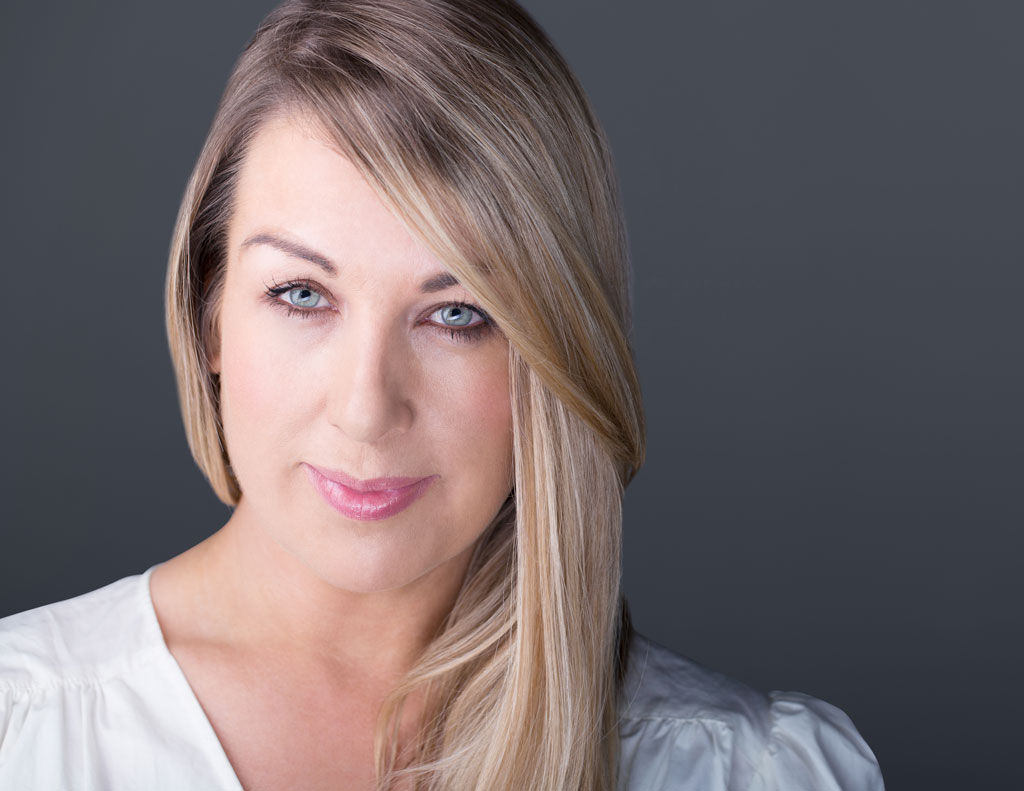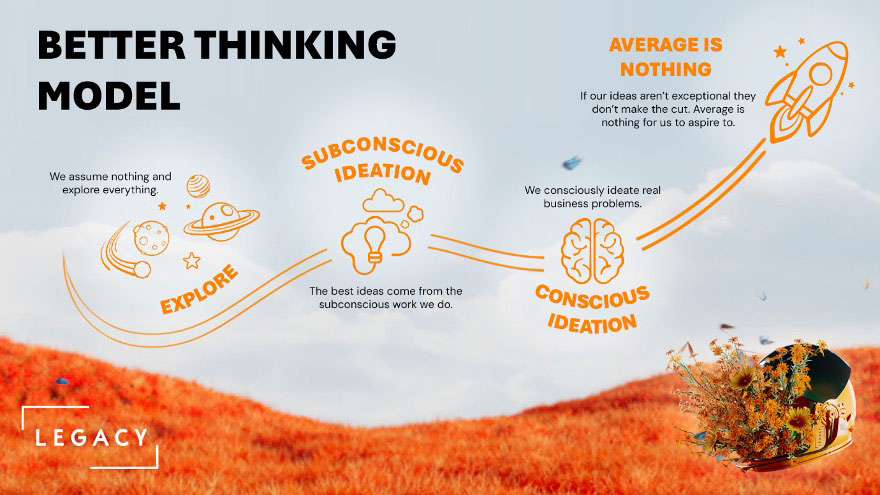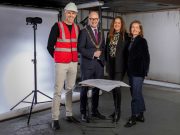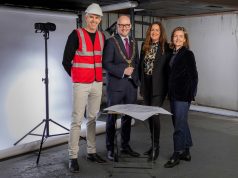 Having recently won PR Agency of the Year and rolled out a number of creatively led marketing campaigns for brands, Claire O’Grady, director of Creativity & Strategy with Legacy Communications outlines the steps the agency has taken to foster a culture of creativity.
Having recently won PR Agency of the Year and rolled out a number of creatively led marketing campaigns for brands, Claire O’Grady, director of Creativity & Strategy with Legacy Communications outlines the steps the agency has taken to foster a culture of creativity.
July has been a serious month of reflection for the team at Legacy and one major area of thinking has been around creating the right conditions for creativity and great ideas.
Three things inspired us to take a look at some of the conditions for great ideas:
The first thing was we just won PR agency of the year 2024 at the PRCA awards; so we took a look at what we might be doing right. The second thing was to look at the inspiring talks and learning at Cannes and how many of the winning campaigns got there
Lastly; a very fruitful discussion in an episode of a recent three-part podcast with That’s What I Call Marketing- Creativity Matters where we dissected the culture that needs to exist for the best ideas to flourish.
Here are some of the things we felt make a difference when are you are looking to get the best thinking.
The Lone Ranger
The first thing we discussed was the age-old idea of the lone creative ranger; for better thinking to happen we need to share the creative load. Don’t rely on one person to deliver “the ideas”. What we are finding at Legacy is that the ultimate culture for creativity is to recognise that everyone has the potential to play a role in great ideas. We are all creative. It’s true; think about children who spend their days painting; drawing; creating some better than others but most of the time when you create the space for expression from everyone; great ideas grow.
Explore
Our best ideas and our award-winning work has definitely come when we made space to explore. Exploration encourages diverse perspectives and unveils assumptions and bias or viewpoints that might otherwise go unnoticed.
When we explore, we naturally discover new things. We also challenge convention by exploring beyond the familiar. Even the process of exploring helps with our emotional intelligence and self-awareness which is essential for creative thinking.
Who Cares?
Key in our line of work is exploring the target audience and unlocking what matters to them and what they really care about. How can we help our brands target an audience if we haven’t put them at the centre of what we are creating; this needs time and care and a curiosity to understand before we can create.
A really good example of exploring what matters is Gen Alpha who are just short of inventing their own language. The lyrics of the Tik Tok hit “Sticking out your Gyat for the Rizzler” has so many important layers to it when it comes to understanding our youngest audience. Not least that many speak like this on a daily basis. We haven’t a hope of connecting with them if we can’t even speak their language.
So, if you don’t understand many (or any) of the lyrics to this song; you probably need to explore what matters to Gen Alpha a bit more.
Create the space for both Fast + Slow Ideas
Make space for both fast thinking or reactive ideas and the slower; more deliberate pace of a big campaign idea because creativity isn’t static. Good ideas can land quickly and unexpectedly; making sure your team has permission to share an unexpected idea that hasn’t been developed is making sure cadence isn’t a brilliant idea killer.
Fast Creativity: The Sprint
Fast creativity is the sprinter in the race of ideas. It is the rapid-fire brainstorming session, the quick-witted tagline that comes to you in a flash, the viral social media post that captures the trend in a moment. Or in the case of the recent Cannes Lions winner for Heinz where they took one of their worst sellers- ranch dressing- and turned it into one of their best sellers simply by reacting to one single tweet from Taylor Swift who was “seemingly eating ranch” dressing. They reacted like a swifty; swiftly by renaming their ranch dressing..Seemingly Ranch.
Slow Creativity: The Marathon
On the other end of the spectrum lies slow creativity, the marathon runner of the creative world. This is the deep, reflective process that requires time and patience. It’s the development of a comprehensive campaign strategy, the meticulous crafting of a brand’s story, the careful research and planning that goes into a product launch.
Slow creativity allows for a more holistic view, considering all angles and potential outcomes. It’s about building a strong foundation for ideas that are not only innovative but sustainable. While it may not have the immediate impact of fast creativity, its effects are long-lasting and often more profound.
And Finally ….Build a Boring but effective Process.
Everything about a process when it comes to creativity seems counter intuitive, but ideas need parameters. A simple but meticulously thought-out four stage process has been developed at Legacy to enable everyone to think better.
Our Better Thinking process stages take everyone on a journey that has unearthed some of our best ideas. We use it with our clients to solve both business and creative problems. 
So, what is our Better Thinking Four-Stage Process for Cultivating Better Ideas ?
Preparation: The first stage is all about laying the groundwork. It involves exploration and research, gathering information, and immersing ourselves in the problem at hand. This sets the stage for creativity by providing the necessary context and knowledge.
Incubation: This is the stage where the subconscious takes over. After absorbing all the information, it’s time to step back and let the ideas simmer.
Illumination: This is where we consciously ideate. We really focus on creating the idea. The ‘aha’ moment arrives during this stage. This stage is unpredictable but is usually a result of the combination of preparation and incubation.
Average is Nothing: This is where we ask ourselves the question; is this average? Because that is not what we aspire to. We quality control our ideas. The final stage is also about refining the idea, testing it, and making sure it’s viable. This involves critical thinking and sometimes going back to the drawing board to tweak or improve the concept.





















